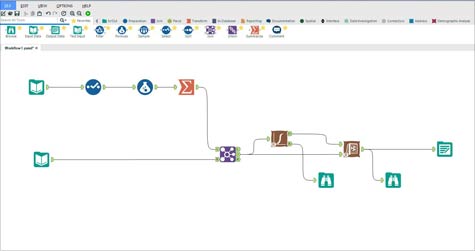Once end users start correlating data between different data sources, it’s usually not too long before they leave the inherent limitations of the spreadsheet model behind. Looking to accelerate the migration to more advanced analytics tools, Alteryx has released an upgrade to its analytics software that sports a revamped user interface that makes it simpler to navigate blended sources of data.
Alteryx president and COO George Mathew says that it’s becoming increasingly common for line of business executives to examine as many as five to six different data sources a day. To help make sense of all that data, version 10 of Alteryx Analytics has extended the number of data sources it supports to also include in-database processing within Amazon Redshift, Impala, Apache Spark and Teradata data sources. Those data sources complement existing data processing support for Oracle, Microsoft SQL Server as well connectors that Alteryx has created for SAP HANA, MongoDB, Marketo and Salesforce data sources.
In general, Mathew says usage of analytics within most organizations is being driven from the bottom up. For all the efforts internal IT organizations have made in trying to get end users to adopt business intelligence applications over the years, it’s clear the vast majority continue to rely on spreadsheets. The only thing that will change that behavior is when the number of data sources along with the actual amount of data that needs to be analyzed become too large to efficiently address using a spreadsheet, says Mathew.
To facilitate that shift, Mathew said the latest version of Alteryx Analytics 10 features enhanced collaboration tools for the version of the company’s software that can be deployed on premise. In most instances, organizations that have significant regulatory requirements to address are opting to deploy Alteryx Analytics on a local server versus using the software-as-a-service offering, noted Mathew.
Naturally, there’s no shortage of analytics options available to end users these days. The best thing about that is that while the internal IT organization may not have a lot of influence over which ones are used, just about any one of them is better than having to support spreadsheet applications that are not only cumbersome to use, but bring a raft of compliance and security issues just about everybody could do without.




